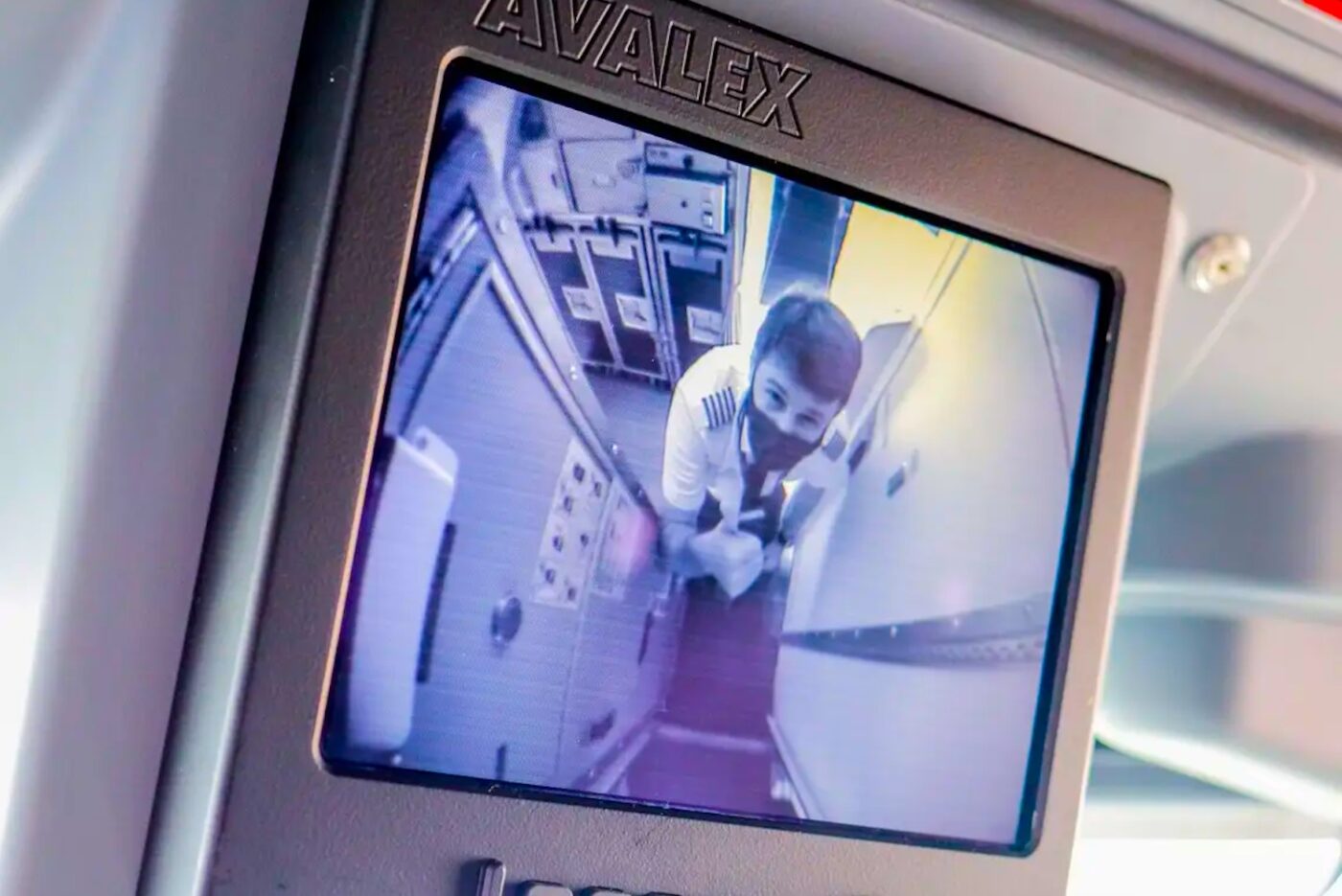Travel is full of concerns as it is. Last year we reported on a spike in hidden cameras in holiday rentals and, shortly after, so-called ‘paranoid travel hacks’ — designed to keep people safe from surveillance while staying away — went viral on TikTok. Unfortunately, it seems that aircraft themselves are no exception to this wider trend.
While airlines deploying some cameras on their plans makes total sense and for a large segment of the population may actually be a very welcome development — given the gains in aircraft security and safety that they allow for — it’s the unexpected locations and pervasiveness of these devices that gave us something of a shock.
RELATED: Japanese Hotel Lets You Stay For $1… But There’s One Perverse Catch
The modern world is already hyper-connected; surveillance cameras have become a common sight in public spaces and the widespread use of mobile phones means that everyone has a high-definition camera at their fingertips. While exterior cameras on aircraft have been around for decades to aid pilots and entertain passengers with thrilling views of takeoffs and landings, the prevalence of interior cabin cameras is something many passengers know little about.
JetBlue pioneered the integration of internal surveillance cameras back in 2002, receiving Federal Aviation Administration (FAA) approval to install cameras that stream live but, importantly, unrecorded footage directly to the cockpit. This helps the flight crew keep an eye on cabin activities. Now, cameras positioned near cockpit doors or areas hard for crew members to see from their stations are standard practice.
Given that so few passengers are actually aware of these cameras and that they’re being watched at all times, those who discover them often react with what we can politely call ‘dismay’. One such instance came to a head on a FlyerTalk forum where a passenger expressed shock at finding a camera in the first-class section of an Airbus A380.
Unsurprisingly, this has sparked a lively debate, with some voicing privacy concerns while others defended the move, saying that no mode of transport or cabin class should be exempt from such safety and security measures.
The rationale for more in-flight surveillance is pretty straightforward: there has been an ongoing uptick in incidents involving unruly or intoxicated passengers. While, thankfully, full-blown acts of airline terrorism are far less frequent, these cameras play a crucial role in keeping nefarious activity of a more serious timbre at bay too.
Airlines justify the use of cameras as tools for enhancing safety and service. For example, they enable cabin crew to quickly respond to emergencies or anticipate the needs of passengers, especially in premium cabins.
The scope of surveillance is set to expand in the coming months. Reports from 2019 pointed to Airbus’ plans to install cameras outside lavatories. These would help manage queue lengths and monitor bathroom supplies, purportedly without compromising privacy, as the cameras are apparently designed to obscure faces…
Seatback cameras in airline entertainment systems have also become a contentious issue. Manufacturers like Panasonic Avionics have included cameras in their in-flight entertainment units. While these are marketed as having uses for future features like seat-to-seat calling, the presence of these cameras has understandably raised concerns about their potential surveillance capabilities.
As in-flight surveillance technology advances, travellers are left to navigate the balance between safety and privacy. Do you consider these cameras to be a benefit for flyers or an invasion of our ever-encroached privacy? Let us know.
